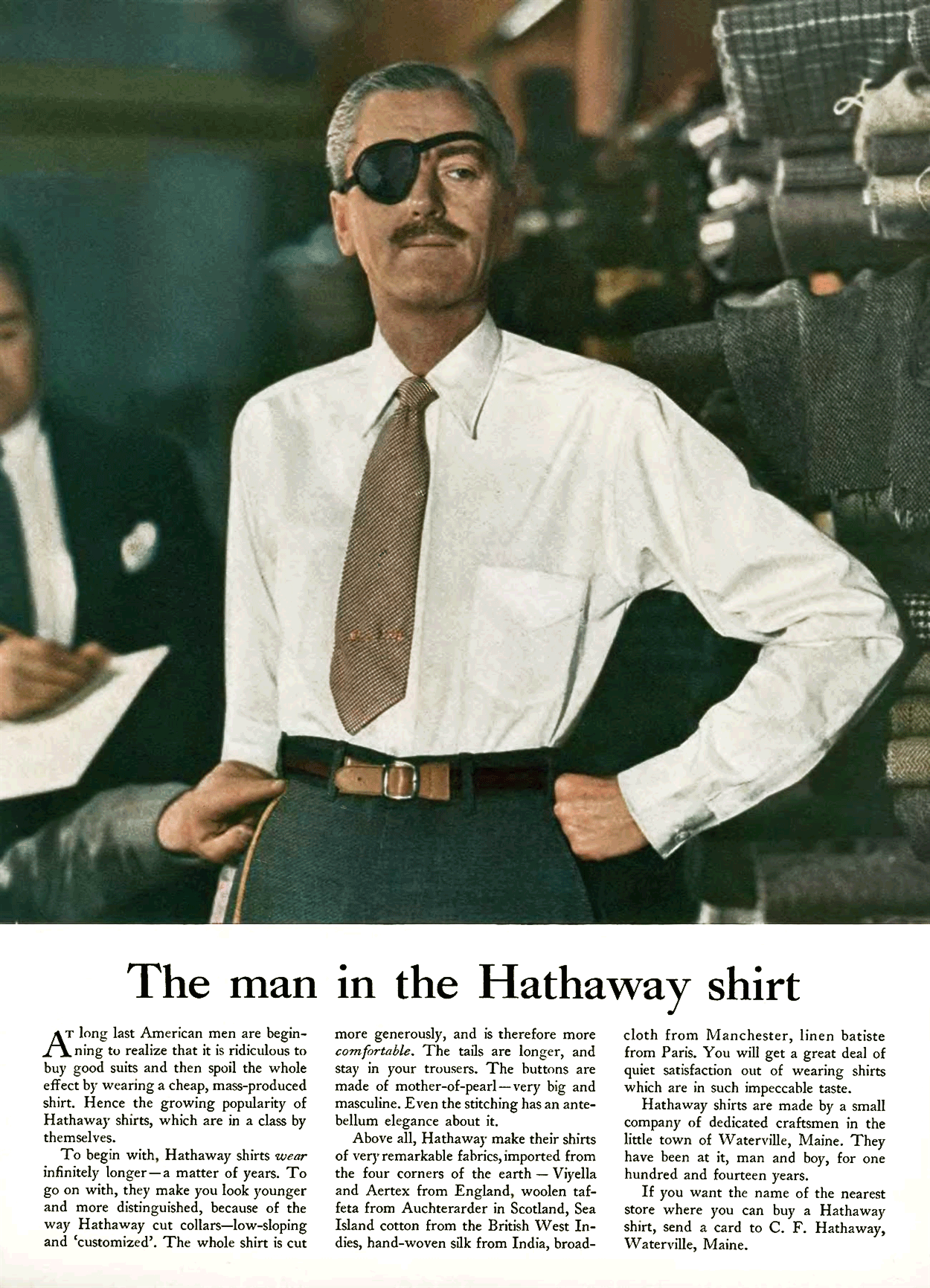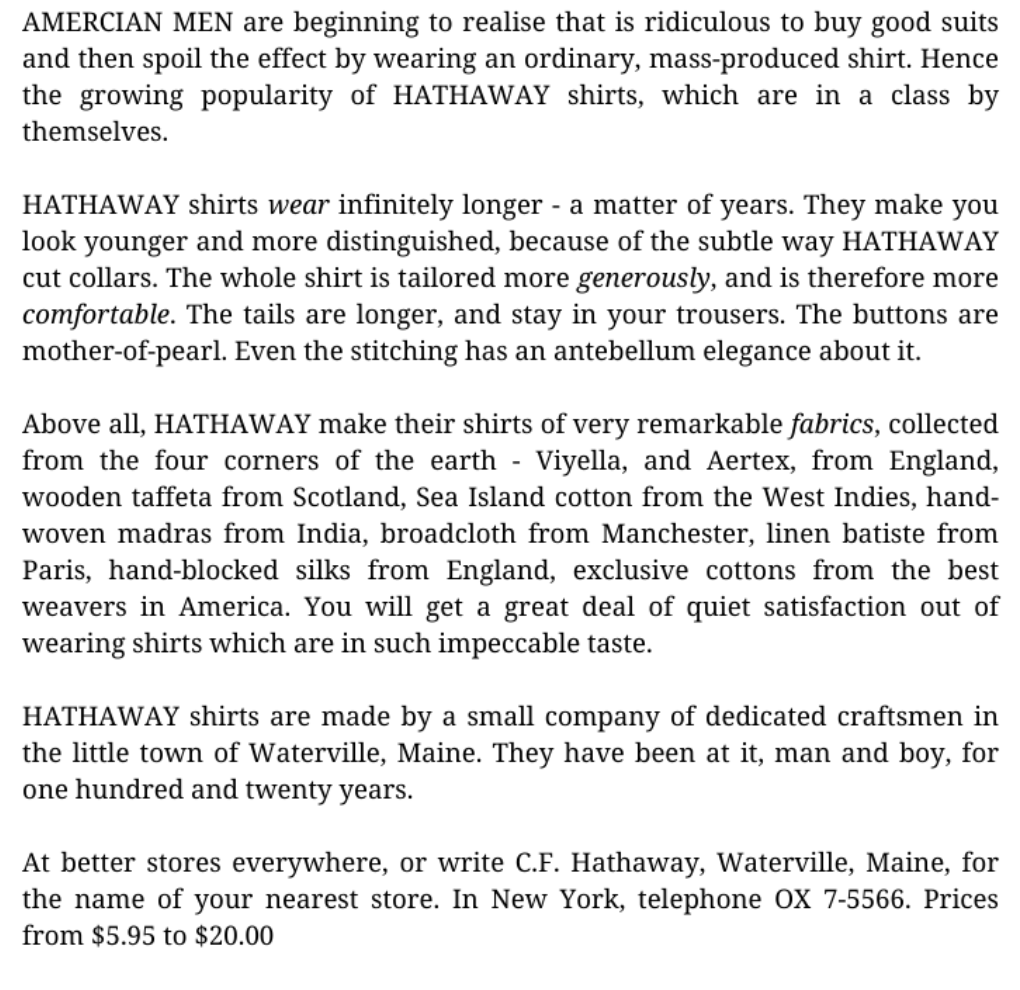“The Man In The Hathaway Shirt” Ad by David Ogilvy 1951

Why This Ad Works

Call to Action (Scarcity)
The closing line, “found at better stores everywhere,” reinforces exclusivity. It suggests not everyone can get them easily, making the shirts more desirable.
Lesson: Create scarcity in your call to action.
Curiosity (The Eye Patch)
The eye patch was a genius addition. It makes you pause and wonder, “Why does he have an eye patch?” This creates story appeal, pulling readers in. Curiosity is a proven way to stop the scroll or grab attention in any medium.
Lesson: Add an unusual or unexpected element to your visuals to spark curiosity. For example, use a prop, a mysterious expression, or something out of place.
Contrast (Luxury vs. Mass-Produced)
The copy sets up an “us vs. them” dynamic by contrasting Hathaway shirts with “cheap, mass-produced shirts.” This positions Hathaway as the premium option, appealing to readers’ desire for quality and exclusivity.
Lesson: Always contrast your product with a common alternative to make your offering the obvious choice. Highlight how yours solves a problem others ignore.
Social Proof (Growing Popularity)
Early in the ad, Ogilvy mentions the “growing popularity” of Hathaway shirts. This creates a subtle sense of urgency and FOMO (fear of missing out), making readers want to join the trend.
Lesson: Use phrases like “trusted by thousands” or “fastest-growing” to create social proof without overstating.
Specificity (Fabric Details)
Ogilvy lists impressive, specific details about the fabric—“hand-woven silk from India, Sea Island cotton, woolen taffeta.” Grouping these details in one sentence gives them impact, making the shirts feel rare and valuable.
Lesson: Be specific about features, especially ones your audience cares about. Specifics make your claims believable.
Trust and Relatability (Small Town Craftsmanship)
The ad humanizes Hathaway by mentioning its origins in a “small town” with “dedicated craftsmen” and over “114 years of experience.” This appeals to readers who value authenticity and trust heritage brands.
Lesson: Share your brand’s history or values to build trust, especially if you’re a smaller brand competing against giants.
